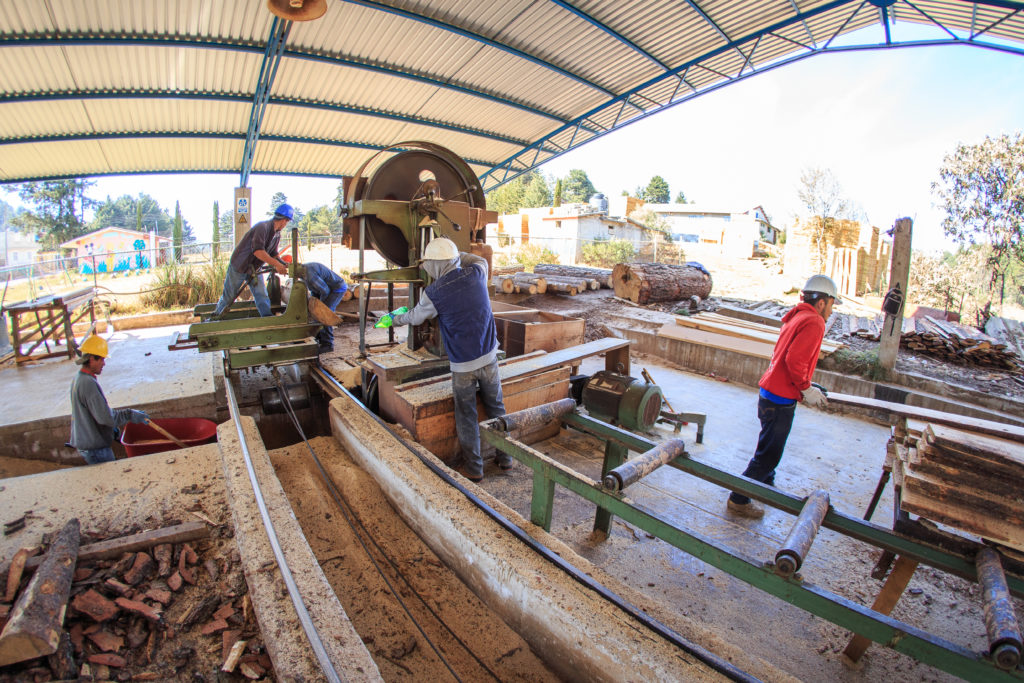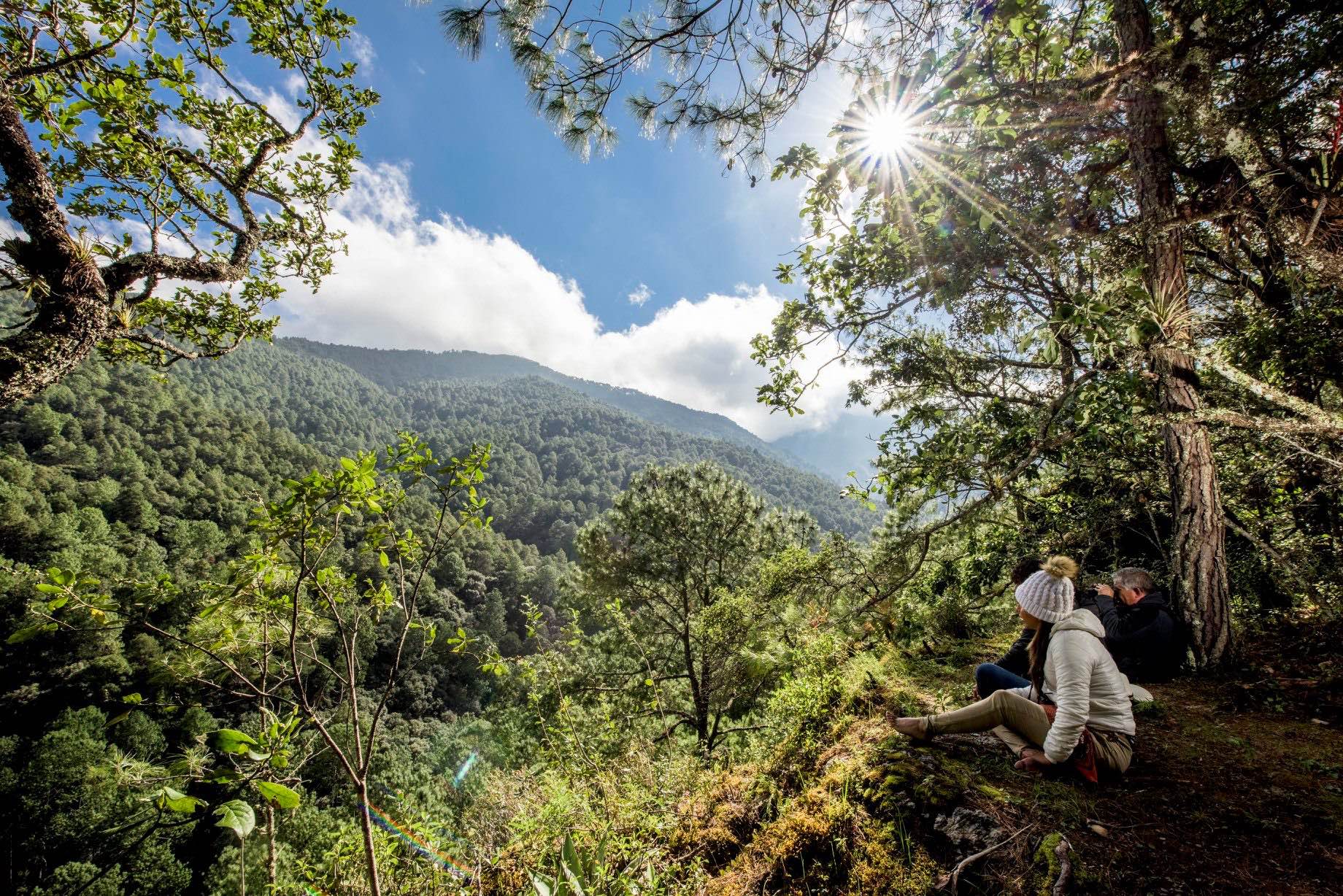- Rural communities involved in forest management and ecotourism across Mexico are reeling from the economic impact of the shutdown sparked by the COVID-19 pandemic.
- Many of these communities run ecotourism projects for income, but mobility restrictions have meant no more visitors, and therefore no income.
- The communities are also struggling with a slowdown in their other main income stream, the sale of forestry products, as the wider economy takes a hit from the pandemic response.
- Without assistance to stay afloat, community managers say they fear they will have to shut down their ecotourism initiatives, which is one of the main incentives for keeping their forests standing.
This year, the Easter holidays didn’t bring tourists to the Presa del Llano ecotourism park in Mexico. There was none of the usual noise of kayak paddles splashing in the water, or visitors yelling while plummeting down a zip line from a height of 60 meters (200 feet), or meat sizzling on the grill. Only one person a day showed up at the park.
“I have to come daily,” says Felipe Martínez, the manager of Presa del Llano, which is part of the San Jerónimo Zacapexco ejido (communal landholding). “I also rely on the community. And if they see I waver, they’ll say: ‘Well, that means you are not interested.’ They’ll bring someone to replace me.”
At the beginning of March, the commissioner of communal land ordered Martínez and his 35-person team to close the park as a preventive measure in response to the COVID-19 pandemic.

Since then, Martínez and his team members have taken turns going to the park alone to check on it. Dozens of non-permanent workers don’t have access to the park, which means they don’t have an income.
“It was a hard blow,” Martínez says. “If this had happened at a different time and not the Easter holidays, we wouldn’t have felt it so much. We were all expecting and longing for this date.” Losing the ecotourism income stream doesn’t just affect those who work in the park, he says. It also damages the whole San Jerónimo Zacapexco community, as they receive a share of the revenues at the end of every year.
Martínez has also been fielding calls from his colleagues asking for work. Often, he doesn’t know how to answer. “Where? There are no visits,” he says. The park, he declares, “is dead.”
The first impacts of the coronavirus
On March 30, in light of a growing number of confirmed cases of COVID-19, the Mexican government declared a health emergency at the national level and suspended all activities that the Health Department considered non-essential.
The spread of the novel coronavirus also took by surprise other towns that are involved in community forestry. One by one, they’ve had to isolate to protect their inhabitants, who in most cases live far from urban areas and medical assistance.
The economic consequences of the health emergency struck almost immediately, especially in villages involved in community forestry and that developed ecotourism projects as part of their income stream. These communities and ejidos face a one-two punch from the collapse of the timber market and the lack of tourists.

Mexico is a global pioneer in community forestry. The ejidos or communities are the owners of the forests, and they benefit from them through the sustainable extraction of resources like timber. At the same time, they protect the ecosystem.
Under this scheme, many communities have become the most important defensive line for forests, especially against pests, illegal logging and fires. At the same time, community forestry companies, created to sell timber, have allowed several communities to expand their activities to other projects like ecotourism.
In Mexico, 1,392 ejidos and communities run community forestry companies. According to data from the Mexican National Forestry Commission (Conafor), 350 of them have the infrastructure to develop ecotourism activities, but only half of those were carrying them out before the pandemic struck.

A health and environmental crisis
Even before COVID-19, the forestry sector was already struggling due to a lack of staff and the limited budget of environmental institutions, according to Rocío Contla Arzamendi, a forest engineer with the Mexican Association of Forestry Professionals in Mexico City. “Today, I think that even the National Forestry Commission doesn’t have sufficient knowledge about how the situation is affecting people.”
She recalls asking colleagues in a WhatsApp conversation about how the communities they worked with across the country were faring. The answers weren’t encouraging: Many of the forestry companies have had to cut their workers’ salaries, in some case by up to 75%.
Before the pandemic, Contla Arzamendi used to visit a national park or go camping at least once a month. She can’t do it now. She says she understands her decision to stay away keeps those places safe, but that it also damages ecotourism and the livelihoods of those who rely on it.
Emmanuel Cosmes understands this dilemma. March marked his 15th anniversary with the ecotourism company he manages in Capulálpam de Méndez, Oaxaca state. Now, he and the 18 families who work there say their future is uncertain. Their huts, restaurants and recreation areas, including the enclosure where they take keep white-tailed deer and their biodiversity museum, haven’t seen any visitors since early April. Capulálpam, like other communities in the Sierra Juárez in Oaxaca, has banned access to tourists.
“If the situation goes on, it will affect us all,” says Cosmes, who only receives the minimum wage for now. “We don’t know how long we’ll be able to hold on or what will happen next.” His wife also had to close her traditional medicine business. They think they can hold out for one and a half months at most; they don’t have a plan beyond that.
If the forestry companies collapse, the communities and the families they support will suffer.

“Forestry companies are like a cow for the community. They milk it to get money for everything,” says Francisco Chapela, a natural resources economist with the association Estudios Rurales y Asesoría Campesina (Rural Studies and Farming Advice) in Oaxaca. “And now sales have stopped. The cow isn’t being fed. It’s getting thin.”
As the COVID-19 epidemic drags on, Chapela foresees two possible scenarios. If welfare mechanisms to promote and support forest communities are developed so that the communities can keep taking care of the forests, the economy could be reactivated in a few months. But the opposite could happen too.
“The other scenario is that they close, the ecotourism project is over, the forestry project is over, we close down the plant nurseries and we go to look for work somewhere. And the farmers will come,” Chapela said. In two or three years, “there could be a hard setback in the care for forests and rainforests in Mexico.”
Leticia Merino, an anthropologist with the Institute of Social Research at the Autonomous National University of Mexico (UNAM), says she isn’t very optimistic about the situation. She says she doesn’t think that government agencies like the Federal Attorney for Environmental Protection (Profepa) or the Department of Environment and Natural Resources (Semarnat) are able to support the communities who need help.
For 2020, government funding for the environmental sector amounts to approximately $1.2 billion, less than half the amount allocated in 2015.

“If their budget was already low, I dare to think it will be even lower now,” Merino says. “And if environmental justice was weak, now it will be weaker.” That could spark a new surge in illegal logging and burning in regions where monitoring and control are curtailed by social distancing restrictions.
Conafor, the forestry commission, says that from May, the communities that have applied for support through grants will receive funding to invest in reforestation, sustainable forest management or land and water conservation. These resources will be used to “reactivate the economy,” says Mario Mosqueda Vázquez, Conafor’s general coordinator of production and productivity.
Other assistance schemes, like the Program of Payment for Environmental Services, will remain active during the pandemic. And various ministries are looking into the possibility of trading timber produced by the communities to build housing and prevent the forest product market from collapsing.
Amid the health crisis, fire prevention and health actions will be considered essential activities, Mosqueda Vázquez says, and workers in these areas will continue to assist forest communities across the country via phone or video calls.
Felipe Martínez and Emmanuel Cosmes say the pandemic could be an opportunity: a lesson for the community and a moment to create an action plan or even a contingency fund to persist, work and get through future crises. But for now, doubts prevail.
“I’m worried about my people,” Martínez says. “If this lasts, what are we going to do? It will be hard because we can’t sustain ourselves.” In the meantime, his colleagues keep calling him. He listens to them. They want to go back to work in the park.
Banner image of community forests in the Sierra Juárez in Oaxaca, by Edel Bautista via Turismo Ecológico comunitario Capulálpam on Facebook.
This story was first reported by Mongabay’s Latam team and published here on our Latam site on April 21, 2020.
